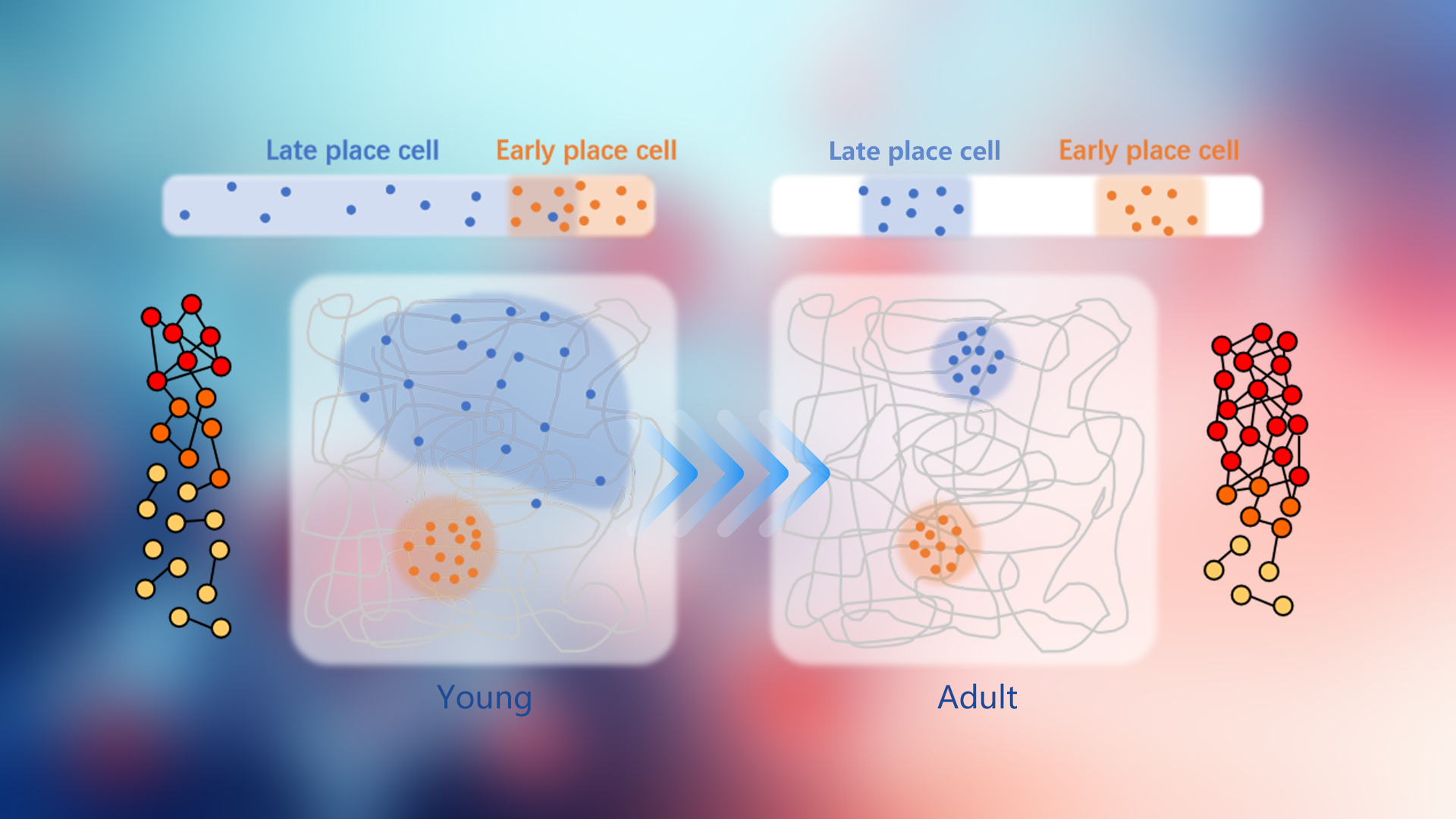Spatial cognition is crucial for animals to navigate, memorize, and adapt to their environment. This ability relies on both innate neural substrates and learning through experiences. Previous studies have identified place cells in the hippocampus that encode spatial locations, grid cells in the medial entorhinal cortex that fire in a hexagonal grid pattern across an environment, and head-direction cells in the dorsal presubiculum that encode head-direction information. Together, these functional cell types constitute the spatial cognitive map. However, there are still many unresolved mysteries regarding the function of these cells in the early stages of postnatal development, the processes of their maturation, and the function and changes of neural networks in the early stages of development.

Assistant Professor Xiaojing Chen’s research team from the School of Life Sciences at the Southern University of Science and Technology (SUSTech), in collaboration with Principal Investigator Cheng Wang’s team from the Institute of Brain Cognition and Brain Diseases at the Shenzhen Institutes of Advanced Technology, Chinese Academy of Sciences, has published a study that reveals the mechanisms underlying the development of spatial cognition. The work contributes to our understanding of the intricate interplay between innate predispositions (“nature”) and learning through experiences (“nurture”), offering valuable insights into the processes shaping hippocampal function during early life.
Their paper, titled “Early and late place cells during postnatal development of the hippocampus,” has been published in the journal Nature Communications.
In young animals, the percentage of early place cells is low; the spatial coding abilities of place cells are low. These early place cells form highly synchronized assemblies and likely serve an innate spatial representation function. With development, more cells become place cells, called late place cells; the spatial coding ability of place cells increases, and the synchrony of the cell assemblies also increases. Late place cells are supposed to play a critical role in spatial cognition shaped by postnatal learning.
Using one-photon calcium imaging, the team longitudinally recorded hippocampal CA1 neurons in freely moving juvenile rats from postnatal day 17 to day 28. Consistent with previous research, place cells were observed in early life, which they referred to as early place cells. Using two distinct environments, a linear track, and an open field, they revealed that early place cells exhibited robust spatial coding capabilities in multiple environments. Their spatial coding abilities ranked consistently across days. However, compared to late developmental stages and adulthood, the stability of early place cells’ place fields across days was relatively weaker.
These results suggest that early place cells may provide the rudimentary cognitive map required for innate navigation in newborn individuals. With development, more cells became late place cells. These late place cells rapidly improved their spatial coding abilities during early development, while early place cells showed no significant improvement in their spatial coding during this period. This finding indicates that late place cells might contribute to environmental adaptability during postnatal learning.
The study also demonstrated increased synchronization of the cell assemblies of the hippocampus during development. Early place cells were more likely to form highly synchronized assemblies, suggesting that the improvement of spatial cognition may result from both individual cell coding abilities and network synchronization. Additionally, using high-resolution two-photon imaging, the team examined the neurons in the deep and superficial layers of hippocampal CA1. Early place cells were present in both layers, but the synchrony of deep-layer neurons was significantly higher than that of superficial neurons.
In summary, this work revealed the developmental dynamic of early and late place cells, shedding new light on the developmental processes of spatial cognition and providing critical evidence for the interplay between innate predispositions (“nature”) and learning through experiences (“nurture”) in the development of hippocampal function.
Ph.D. student Chenyue Wang from Xiaojing Chen’s lab and Assistant Investigator Dr. Hongjiang Yang from Cheng Wang’s team are the co-first authors of this paper. Xiaojing Chen and Cheng Wang are the co-corresponding authors.
Paper link: https://www.nature.com/articles/s41467-024-54320-z
To read all stories about SUSTech science, subscribe to the monthly SUSTech Newsletter.
Proofread ByAdrian Cremin, Yingying XIA
Photo BySchool of Life Sciences